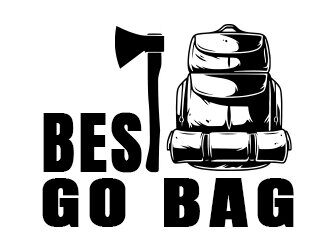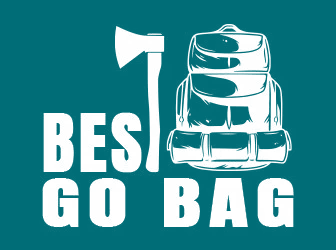“Hunting Weapons for Big Game” encompass a diverse array of powerful tools designed to pursue and capture large and formidable animals in their natural habitats. From precision bolt-action rifles to skillful compound bows, these hunting weapons cater to different styles and preferences of hunters.
When it comes to pursuing big game animals, hunters rely on a variety of powerful and effective weapons to ensure a successful and ethical hunt. From classic firearms to modern bows and rifles, each hunting weapon offers its advantages and challenges.
RELATED: 7 Best Hunting Weapons for Birds: Every Hunter Should Own
What does Big Game Hunting Mean?
Big game hunting refers to the activity of pursuing and hunting large and often powerful animals, typically found in the wild. These animals are known as “big game” due to their size and challenging nature, making the hunt an exhilarating and demanding experience for hunters.
Big game species may include animals such as deer, elk, moose, bears, lions, elephants, and other large mammals. The hunt usually takes place in their natural habitats, which can range from dense forests and mountains to open savannahs and grasslands. Big game hunting requires proper equipment, skill, and knowledge of the animal’s behavior and habits.
Is Big Game Hunting Illegal?
The legality of big game hunting varies widely depending on the country, region, and specific regulations in place. In some places, big game hunting is legal and regulated, allowing hunters to pursue certain species during designated hunting seasons and with the proper permits and licenses. These regulations are often established to manage wildlife populations, prevent overhunting, and promote conservation efforts.
What are Big Game Animals?
Big game animals are large and often powerful mammals that are hunted for sport or sustenance. These animals are typically found in the wild and are characterized by their size and challenging nature, making them formidable targets for hunters. Big game animals are often pursued for their impressive size, antlers, horns, or tusks, which can serve as trophies for hunters.
Examples of big game animals include:
- Deer (such as whitetail deer, mule deer, and elk)
- Moose
- Bears (such as black bears and grizzly bears)
- Bison
- Lions
- Elephants
- Rhinoceroses
- Leopards
- Cape buffalo
- Tigers
- Wild boars
- Wolves
- Mountain goats
- Mountain sheep (such as bighorn sheep and Dall’s sheep)
- Crocodiles and alligators (in some regions)
Top 6 Hunting Weapons for Big Game
1. Bolt-Action Rifle
A bolt-action rifle is a popular and versatile choice for big game hunting. It features a manually operated bolt mechanism that must be cycled between shots. This design ensures reliable and consistent performance, making it a favorite among hunters who seek precision and accuracy.
Bolt-action rifles are available in various calibers, allowing hunters to choose the appropriate cartridge for their specific game and hunting conditions. They are well-suited for long-range shots, making them ideal for targeting big game animals at a distance. The simple and robust construction of bolt-action rifles also makes them reliable in rugged hunting environments.
2. Compound Bow
The compound bow is a modern marvel in archery technology, prized by hunters for its power and accuracy. It uses a system of cams and pulleys to achieve high draw weights, resulting in increased arrow velocity and penetration. Compound bows are designed for ease of use, as the cams reduce the effort required to hold the bowstring at full draw.
This makes it more accessible to hunters of various physical abilities. Compound bows are known for their quiet operation, allowing hunters to get closer to their prey without alerting them. This intimate hunting experience requires skill and precision, making it a rewarding challenge for archery enthusiasts.
3. Semi-Automatic Rifle
Hunters who value rapid-fire capabilities favor semi-automatic rifles. Unlike bolt-action rifles, semi-automatic rifles automatically load the next round into the chamber after firing, enabling quick follow-up shots. This can be advantageous when hunting dangerous games or in fast-paced hunting scenarios.
Semi-automatic rifles are available in various calibers, providing hunters with options suitable for different big game species. However, responsible shot placement is essential, as the rapid-fire capability should not compromise accuracy and ethical hunting practices.
4. Crossbow
Crossbows combine the precision of archery with the convenience of a firearm, making them popular among big game hunters. They use a mechanical design that allows hunters to hold the bowstring at full draw without exerting physical effort, resulting in more accurate shots.
Crossbows have a flatter trajectory, enabling hunters to take precise shots at longer distances. They are often used during archery seasons when firearms may be restricted, offering additional hunting opportunities. Crossbows are user-friendly and suitable for hunters of various skill levels, making them a versatile choice for big game hunting.
5. Muzzleloader
For hunters seeking a traditional and historic hunting experience, the muzzleloader offers a connection to the past. Muzzleloaders require loading gunpowder and a bullet or shot directly into the muzzle, followed by packing the powder down with a ramrod.
This process adds an element of skill and patience to the hunt, as each shot requires careful preparation. Muzzleloaders are available in various configurations, including flintlock and percussion, each with its unique charm. Many states have specific hunting seasons for muzzleloaders, creating special opportunities for hunters to embrace the art of traditional hunting.
6. Shotgun
Shotguns are versatile and widely used hunting weapons for both small and big games. They fire a spread of pellets (shot) or a large single projectile (slug), depending on the ammunition used. Shotguns are especially effective in close-range encounters or dense vegetation where quick target acquisition is necessary.
Hunters often use shotguns for hunting deer, wild boar, and other big game animals in regions with thick brush or dense undergrowth. With a variety of shotgun loads available, hunters can select the appropriate ammunition based on their hunting needs and preferences.
3 Hunting Techniques for Big Game
Big game hunting involves a variety of methods, each tailored to the specific characteristics and behavior of the target species. These methods may vary based on the terrain, hunting regulations, and the hunter’s preferences.
Spot-and-Stalk
This technique involves spotting big game animals from a distance and then carefully stalking and approaching them on foot to get within shooting range.
Stand Hunting
Also known as blind hunting, this method requires hunters to wait concealed in a stationary position, such as a hunting blind or tree stand, for the big game to come into view.
Calling
This technique is used to attract big game animals by mimicking their natural vocalizations, such as mating calls or distress sounds, to draw them closer for a shot.
8 Tips for Better Big Game Hunting
- Know the behavior and habitats of your target big game species before hunting.
- Scout the hunting area in advance to identify game trails and feeding spots.
- Invest in high-quality binoculars and spotting scopes for better game spotting.
- Practice stealth and patience to avoid spooking big game animals.
- Master shooting skills from different positions and distances for accurate shots.
- Consider wind direction to prevent being detected by your scent.
- Always adhere to hunting regulations and safety guidelines.
- Inform someone of your hunting plans and carry essential survival gear for emergencies.
The choice of a hunting weapon for a big game is a significant decision that can greatly influence the outcome of a hunt. Each type of hunting weapon offers distinct advantages, catering to different hunting preferences, skills, and hunting scenarios. Regardless of the chosen weapon, responsible hunting practices, proper training, and ethical shot placement remain fundamental to ensuring a successful and respectful big-game hunting experience.
Share your thoughts with us in the comments section below!
Up Next:
- Food Storage Solutions: Buckets, Lids and Gamma Seals
- 13 Easy Ways to Make a Paracord Keychain
- 7 Buck Hunting Knives To Carry With You At All Times
Follow us on Facebook, Instagram, Twitter, and Pinterest!
Disclaimer: All content on this site is for informational purposes only. Please read our full disclaimer here.


